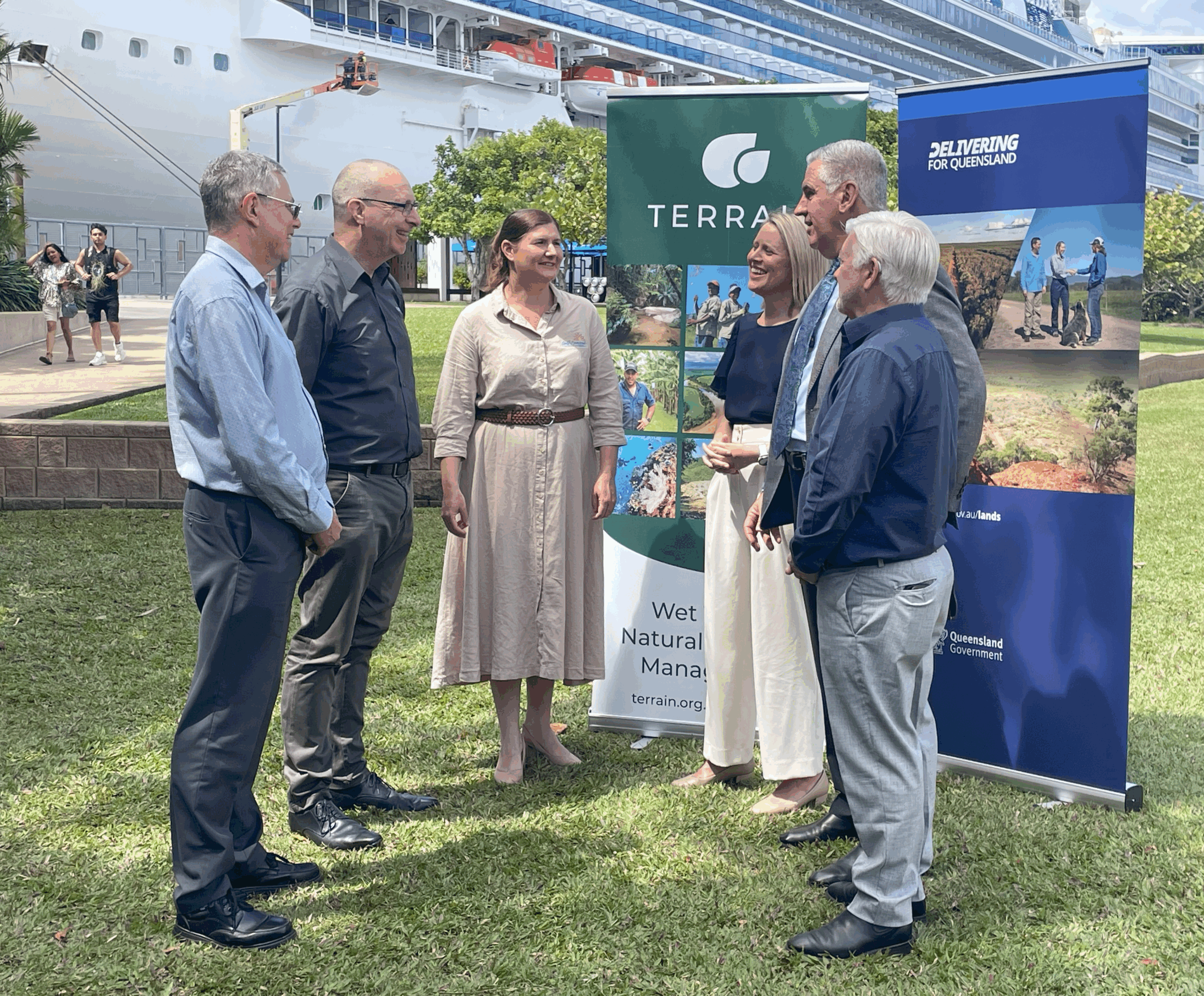Queensland’s Gulf communities are set to benefit from a major investment, with Gulf Savannah NRM to receive $3.88 million through the Crisafulli Government’s new Natural Resource Management Expansion Program (NRMEP).
Announced in Cairns on Wednesday 10 September by Minister for Natural Resources Dale Last, the funding is part of a $6.96 million package to support four regional projects across Queensland.
Gulf Savannah NRM’s investment will deliver two key projects: one to tackle the spread of invasive neem trees along the Gilbert River in Etheridge Shire, and another to protect the Great Artesian Basin springs in the Northern Gulf from damage caused by feral pigs and cattle.
Gulf Savannah NRM CEO Zoe Williams said the funding will support much needed work in these ecologically critical parts of North West Queensland.
“Invasive neem trees in the Gilbert River catchment have been a significant concern for residents, graziers and local councils due to their impact on the natural environment and agricultural production values,” Ms Williams said.
“We are pleased to now have the necessary funding to work with local communities to tackle this issue and restore native vegetation in sensitive riparian areas.”
Ms Williams said the funding will also support protections and new investigations into the Great Artesian Basin’s ecosystem.
“It could be very exciting as springs in other regions have revealed unique biodiversity,” she said.
“Often it’s highly localised, with endemic species that occur only in a small number of springs, so there’s even the possibility we could discover a whole new species.”
The funding forms part of the broader NRMEP initiative, a partnership between the Queensland Government and NRM Regions Queensland, which aims to deliver lasting outcomes for land, water, biodiversity and communities across the state.
Minister Last said the NRMEP builds on the proven track record of regional NRM groups and will bolster expert-led projects shaped by community necessity.
“We all know that Queensland is a land of extremes, of droughts, of floods, and of course invasive species. But we also know that Queensland is where we grow the food that feeds our nation,” Minister Last said.
“To balance that, we need strong partnerships with people who know what they’re doing. I want to thank every NRM group that’s here today for what you do. You’re out there on the ground, you’re working with the landholders, the councils, the local communities, delivering real outcomes,” he said.
Assistant Minister for Tourism and Member for Barron River Bree James, who also spoke at the announcement, said the funding would deliver benefits for both the environment and local communities in Far North Queensland.
“The Wet Tropics inject $5 billion into the tourism economy here in Far North Queensland and we know that we are one of the most biodiverse regions on the planet, so our job is to protect those areas. This investment is going to do just that,” Ms James said.
NRM Regions Queensland CEO Chris Norman said the NRMEP is the result of two years’ work by the sector and represents a major win for regional communities.
“We worked very closely with the Department getting these projects up and running. It’s pretty exciting that we’re at a national conference and we’re able to speak about Queensland,” Mr Norman said.
“We’ve got people from all over Australia here and they’re quite jealous about the commitment and support we’re getting from our state government.”
Neighbouring organisation Terrain NRM will also receive $2 million to protect and restore more than 75 hectares of high-priority vegetation in Far North Queensland, while NRM Regions Queensland will lead statewide work to demonstrate and measure the impact of NRMEP projects.
The NRMEP announcement was made at the biennial National NRM Knowledge Conference in Cairns, where Ms Williams also presented on GSNRM’s joint study with James Cook University examining social and community resilience in the Northern Gulf.

